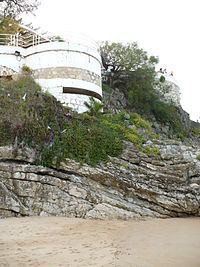Dates 14 Aug 1937 – 1 Sep 1937 | ||
 | ||
80,000 infantry50 artillery batteries44 airplanes 90,000 (25,000 italians) infantry126 guns220 aircraft 60,000 captured Nationalist 30,000 dead, wounded, capturedItalian 486 dead1,546 woundedone missing Result Decisive Nationalist victory Similar Spanish Civil War, Battle of El Mazuco, Battle of Mérida, Siege of Gijón, Campaign of Gipuzkoa | ||
Wtf the battle of santander
The Battle of Santander was fought over the summer of 1937 in the War in the North campaign in the Spanish Civil War. Santander's fall on August 26 assured the Nationalist conquest of the province of Santander, now Cantabria, and marked the last stand of the Republic's "Army of the North," which was destroyed and captured in the fighting.
Contents
Background
After the fall of Bilbao on 16 June and the end of the failed Republican offensive at Brunete on 25 July, the Nationalists decided to continue their offensive in the North and occupied the Cantabria Province.
Opposing forces
The Nationalists' Army of the North had 90,000 men (of which, 25,000 Italian), led by general Davila. The Italian force, led by General Bastico, comprised Bergonzoli's Littorio Division, Frusci's Black Flames Division and Francischi's 23 March Division. The Nationalists had also six Navarrese brigades led by Colonel Solchaga, two Castilian brigades led by General Ferrer, and one mixed Hispano-Italian division, the Black Arrows, led by Colonel Piazzioni. The Nationalists had also 220 modern aircraft on this front (70 of the Condor Legion, 80 of the Aviazione Legionaria and 70 Spanish), including many Me-109 fighters.
Opposing them, the Republicans had Prada's 14th Army Corps and José García Vayas's 15th Army Corps, under the overall command of General Mariano Gámir Ulíbarri; a total of about 80,000 men. The Republicans had also 44 aircraft (mostly slow and old, except 18 Soviet-built fighters). Furthermore, the morale of the Republican trops was low and Basque soldiers thought that they might surrender to the Italians, in return for their lives.
Timeline
Consequences
Santander's fall, coupled with the capture of heavily fortified Bilbao, tore an irreparable gap in the Republic's northern front. The destruction of the Army of the North marked another crippling blow to the Republic's sagging strength and turned the war to Franco's favour. Factors accounting for the Republican defeat include:
The disaster proved total and the losses beyond repair. Of the twelve Basque brigades there remained at the end only eight battered battalions. The Republican Army of Santander of twelve brigades was reduced to six battalions. The Asturians committed 27 battalions and escaped with only fourteen. In no other theatre of the civil war did Franco's troops achieve results as decisive as those of the Santander campaign: sixty thousand Republican soldiers were wiped off the map, with corresponding losses in materiel. The War in the North was all but won.
